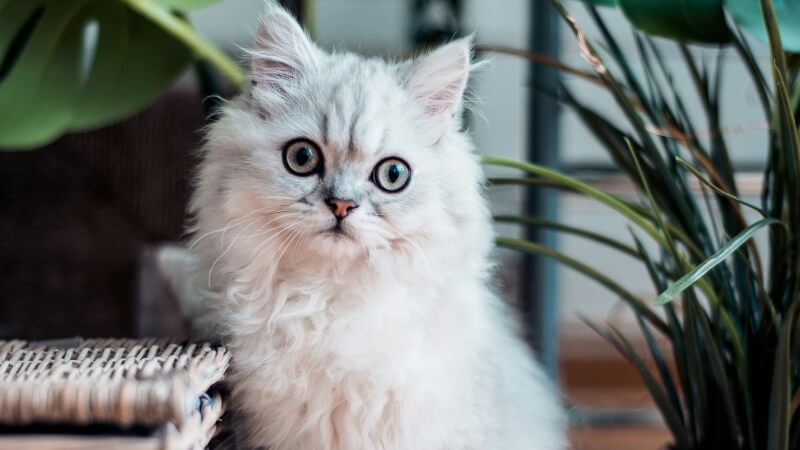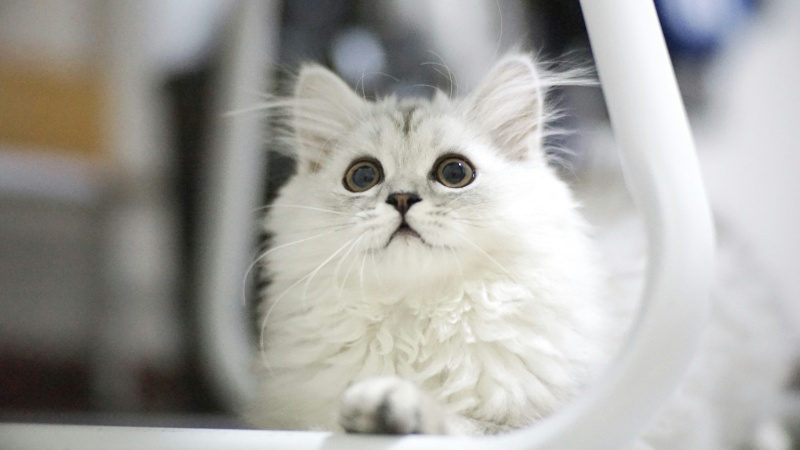
How To Craft A Cozy Cat Vest From Fabric Strips
Have you ever seen your feline friend lounging around and thought, “What could possibly make this picture more adorable?” The answer is simple: a cat

As a devoted cat parent, I’ve often encountered the question: Can cats wear vests? Initially, this query might seem trivial, but for those of us who adore our feline companions, it’s a subject worth exploring.
Drawing from my own experiences and a wealth of research, I aim to provide an insightful look into the world of feline fashion, specifically vests, without any sales pitch or call-to-action, just pure information and personal anecdotes.
Firstly, it’s essential to understand a cat’s natural disposition and physical characteristics. Cats are known for their agility and independence. Their bodies are designed for flexibility and movement.
This fundamental understanding guides my approach to dressing my cat, Whiskers. The question isn’t just “Can they wear vests?” but also “Should they?”
My journey into feline fashion began out of necessity. Whiskers underwent surgery, and to prevent her from licking her stitches, I had to find an alternative to the traditional Elizabethan collar.
That’s when I first considered a cat vest, a type of snug vest. It was a practical choice, providing protection without restricting her movement significantly.
The comfort of your cat is paramount. The vest I chose for Whiskers was made from a lightweight, breathable fabric.
It was crucial that the material wasn’t too heavy or restrictive, as cats regulate their body temperature through their fur.
A vest that’s too tight or made from non-breathable materials can cause discomfort or even health issues like overheating.
Size matters. The vest should be snug enough to stay on but loose enough to allow full range of motion. I spent a considerable amount of time ensuring the fit was perfect for Whiskers. It shouldn’t hinder her ability to walk, jump, or lounge.
Whiskers’ reaction was mixed initially. She was hesitant and walked a bit strangely at first. However, she soon adjusted and was able to move, eat, and sleep without any apparent discomfort.
It’s vital to observe your cat’s behavior when they first wear a vest. Any signs of distress or discomfort mean it’s not the right choice.
There are several benefits to cats wearing vests. In Whiskers’ case, it was a practical solution for post-surgery care. It can also provide warmth for short-haired or older cats in colder climates.
However, there are cons as well. Cats rely heavily on their fur and body language for communication. Covering them up can sometimes lead to miscommunication or stress.
In some situations, vests can be medically beneficial. Besides post-operative care, vests can also prevent cats from accessing wounds or irritated skin.
Safety vests with reflective material are available for outdoor cats, providing visibility at night. However, it’s crucial to consult a veterinarian before using a vest for any medical purpose.
In my experience, the decision to put Whiskers in a vest was not taken lightly. It was a decision based on her specific needs and comfort. Post-surgery, the vest was a better alternative to the cone, and it worked well for that purpose. However, once the need passed, I didn’t persist in dressing her up.
Conclusively, cats can wear vests, but whether they should is a question that depends on individual circumstances. It’s about understanding your cat’s needs and preferences. Not all cats will tolerate wearing clothing, and that’s perfectly okay.
As cat owners, our primary concern should always be the well-being and comfort of our furry companions. The experience with Whiskers taught me that while cat vests can be practical and sometimes necessary, they’re not a one-size-fits-all solution.
Each cat is unique, and their tolerance to clothing will vary. Always prioritize your cat’s comfort and health over aesthetics or novelty.


Have you ever seen your feline friend lounging around and thought, “What could possibly make this picture more adorable?” The answer is simple: a cat

The moment you consider a dog hunting vest for your adventurous companion, you’re stepping into a world where safety meets functionality. This vest is not

The concept of a dog cooling vest is a game-changer for pet owners looking to enhance their dog’s comfort during those relentless summer days. Imagine

When you first consider crafting a tactical dog vest, it’s not just about embarking on a fun DIY project; it’s about ensuring your furry companion’s

Have you ever seen your feline friend lounging around and thought, “What could possibly make this picture more adorable?” The answer is simple: a cat

The moment you consider a dog hunting vest for your adventurous companion, you’re stepping into a world where safety meets functionality. This vest is not

The concept of a dog cooling vest is a game-changer for pet owners looking to enhance their dog’s comfort during those relentless summer days. Imagine

When you first consider crafting a tactical dog vest, it’s not just about embarking on a fun DIY project; it’s about ensuring your furry companion’s
Secure and Empower, Walk Responsibly
Copyright © 2025pettacticalharness. All Rights Reserved.